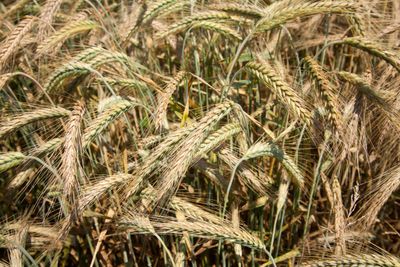About Harvesting Barley
Harvesting barley involves more than simply picking barley grains. You need to know how long the crop takes to mature, as well as factors that can impact when to harvest barley. The exact timing and procedure for a barley harvest depends on the size of your operation and how you intend to use the cereal. Some plant barley for home eating, while other gardeners intend to sell the crop to malt houses or brew their own beer.
Picking Barley Grains for Eating
If you are growing barley to use as cereal in your home cooking, the process for harvesting it is straightforward. You wait until the grain is ripe, cut it down, and let it dry in shocks. How to harvest barley? The most common way to harvest a small crop of home-garden barley is to use a scythe and cut the plants down manually. Be sure to wear long sleeves to avoid skin irritation. If you are wondering when to harvest barley for eating, it depends on when you plant it. You can plant barley in the fall or in the spring. Expect a barley harvest from fall-planted barley about 60 days after the plants begin to grow in spring. Spring-planted barley ripens 60 to 70 days after planting.
Barley Harvest for Malting
Some gardeners grow barley with the intention of selling it to malting houses. This can be lucrative, but you’ll have to be very careful with the barley to make your grain eligible for malting. Of course, many home brewers grow and harvest barley too. Malt houses will only buy grain if it is in excellent condition, a bright gold color with both husks and kernels intact. They buy high quality barley with less than five percent broken kernels, a protein content of 9 to 12 percent, and a germination rate of 95 percent or higher. How you harvest barley and how the grain is stored impact these factors. Generally, those growing barley for malting use equipment that harvests the grain directly from the standing crop. You will get the best barley harvest if you cut your crop as soon as it can pass through the combine machine. The moisture level of the grain at this point is 16 to 18 percent. It is then necessary to dry the grain to get the moisture level down to an acceptable level for malting. Natural aeration is the preferred method since heating the barley can reduce seed germination.
